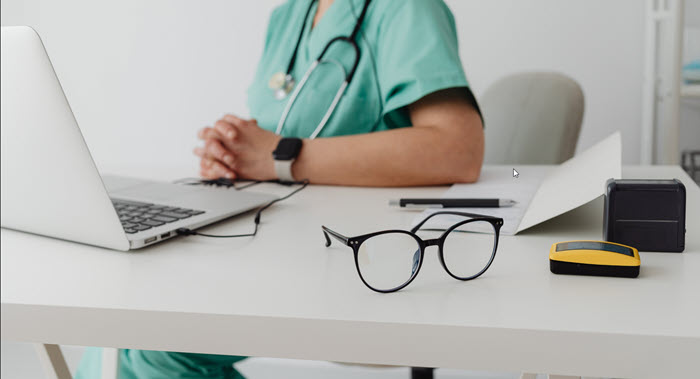“Incident-to” Billing Basics

Incident-to Billing Basics:
“Incident to” is the close cousin of shared/split. Similar only in that the services involve physicians working with ACPs (Advance Care Practitioners). “Incident to” billing is limited to the Outpatient Office/Clinic (POS 11) setting. That’s it. You may not perform “incident to” services in the facility setting. Likewise, you may not “share” services in the Office. If you are working together in the clinic, for billing purposes, the service must meet “incident to” guidelines. No exceptions.
So what does “incident-to” mean? I’m paraphrasing, but essentially, the service provided is incidental to a physician’s service, performed in the office.
Novitas Covered “Incident to” Services:
- Employed by the same entity
- Person supervising and person performing the service must be employed by the same entity. (They may be an employee, leased employee, or independent contractor)
- Only performed in place of service 11 (physician’s office)
- Service must be integral although incidental
- Patient must be an established patient with an established diagnosis. The follow-up services rendered must be connected to the course of treatment the physician planned at the initial service.
“Incident to” billing does not apply to a new patient or a new problem for an established patient.
Novitas Non-Covered “Incident to” Services:
- ACP can’t see a new patient and the service be billed as “incident to” the physician
- “Incident to” does not apply in the facility setting (Inpatient, Outpatient, Nursing)
- A Clinical Social Worker can’t bill for incident to services under their NPI
- Medical Nutrition Therapy and Diabetes Self-Management Training services
- Immediate Relatives or Household Members reimbursement for charges imposed by a physician or his immediate relatives or members of his household are not made.
- Diagnostic tests benefit set forth in §1861(s)(3) of the Act is separate and distinct from the “incident to” benefit set forth in §1861(s)(2) of the Act, diagnostic tests need not meet the “incident to” requirements
- Neither ambulance services nor emergency medical technician services performed under a provider’s telephone supervision
- Services which have their own statutory benefit categories
Novitas “Incident to” Definitions:
Active Participation – It is expected that the physician performs subsequent services of a frequency that reflect that active participation of the course of treatment for the specific problem.
For example: A patient with chronic sinusitis will probably not have to be seen by the physician as often as a patient with congestive heart failure.
Direct Supervision – Physician must be present in the office suite and immediately available and able to provide assistance and direction throughout the time the service is performed. The supervising physician does not have to be in the same room but must be in the office or clinic. The supervising physician does not have to be the same physician who wrote the plan of care, but must be part of the same group practice.
Documentation Requirements:
The patient’s medical records must clearly indicate the following:
- Identify the individual who rendered the service
- Document physician’s presence in the office at the time of the service
- Indicate supervision requirement is met. Document supervising physician’s physical presence in the office suite
- Show physician’s initiation and continued involvement in treatment
- The service must be within the scope of practice of the non-physician practitioner as defined by state law
- Prove reasonable and necessary
The ACP may demonstrate the physician’s initiation (plan of care) and direct supervision in their documentation by starting their note with the following statement.
“I saw this patient today following the plan of care established by ______________MD. Supervision in the clinic, during the encounter was performed by______________MD.”
When all of the “Incident to” requirements above have been met and the ACP has indicated in the note the plan they are following and who was performing direct supervision during the encounter, nothing more needs to be added by the supervising MD. The supervising physician is not required to co-sign the note, or add anything more to the note. Remember, the supervising and ACP are not “sharing” the service in the office. The service is being performed “Incident to” the physician’s plan of care.
If you would like to share a presentation with “incident-to” examples, we have a presentation with narration, a video, and handouts. Additionally, a tip sheet has been created outlining all of the criteria to meet “incident to” requirements. We have created a Quick Tips sheet here. (New) At-a-Glance IM News Blast here.
NOVITAS RESPONSE (internal link only) to “shared” visits in Clinic here.
If you would like additional training, or a documentation review to see how you’re doing, please contact Jay.McVean@uth.tmc.edu or Caroline.Wolbrecht@uth.tmc.edu.
Governmental Resource Links:
“Incident-to Articles (Novitas)
“Incident-to” Guidelines (Novitas)
“Incident-to” Services performed by Non-Physician Practitioners
The Novitas article “Incident to and the Initial Office Visit” states that:
“An initial history and physical performed by a non-physician practitioner, although the physician is documented as being present or in the office suite and immediately available, is not covered under the “incident to” guidelines. As outlined below, the physician must perform the initial service. This includes the history and physical, examination portion of the service, and the treatment plan. It is expected that the physician will perform the initial visit on each new patient to establish the physician-patient relationship.
Our MR will deny or down code claims for initial office visits billed as “incident to” when a non-physician practitioner performs the initial history and physical.”
Note: 12/20/2022 – Novitas took down their link to the above article “Incident-to and the Initial Office Visit” (referenced above). Stay tuned for updates.
“Incident-to” Interactive Tool (Novitas)
“Incident-to” Grid – Harris County Medical Society (HCMS)
University of Chicago Billing Tip Sheet